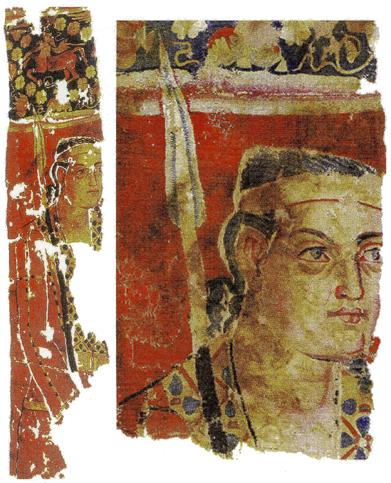Yuezhi spearman on a textile from Tomb No. 1, Sampula (Khotan Prefecture, Xinjiang), after 120 BC. A larger image of this Yuezhi spearman on a textile from Tomb No. 1, Sampula (Khotan Prefecture, Xinjiang) In general, the Bactrian-Yuezhi embroideries found far from Bactria in northern Mongolia supplement our information both about the appearance of that ethnos (unfortunately only its male members), as well as concerning certain aspects of everyday life, religious traditions and their interactions with their neighbors (with the Xiongnu, Sogdians and Greeks of Transoxiana). The style of the embroideries and the correlation of the details of costume and hairdos (Yatsenko 2006, Fig. 121.29, 51) permit one as well to count as one of the more valuable depictions of Bactrian Yuezhi the piece of fabric with the figure of a soldier holding a spear found in Tomb No. 1 of the Sampula I necropolis in the ancient Kingdom of Khotan in Xinjiang (first century CE) (Ursprünge 2007, p. 213) [Fig. 7]. See also Khaltchayan Reception Hall, Yuezhi north Bactria, 50 BC-50 AD Yuezhi embroidered on three pieces of a carpet, Noyon Uul, Mongolia, after 120 BC Bactrian Embroidered fragment showing two Yuezhi riders, Noin Ula Other Illustrations of Ancient Costume & Soldiers |